For local artist Jacqueline Maloney there are no walls separating her studio from her living space and no doors between her home and the natural world. In her kitchen, bouquets of herbs hang in the windows. Shelf mushrooms are glued to the walls creating a little ladder of fungi. Tall turkey feathers fill the corners, and books upon books about art in nature swallow the coffee table.
“My artistic process is healthiest when it is almost seamlessly folded into my daily life,” Maloney says. “If I’m painting a portrait of a plant, I want to be consuming the plant, conversing with it, noticing it in the woods.”
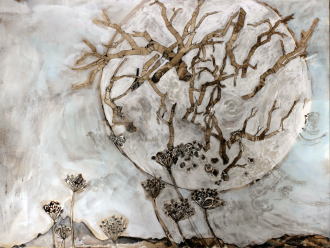
Maloney’s work is inspired by the cycles and seasons: by medicinal plants that grow wild in the forests; by bugs, birds, water, wind, fire and stone. Many of her pieces are drawn with black walnut ink, a deep-brown hue that weaves through her work. It’s ink that she creates herself, spending the better part of a day tending a fire and boiling the hulls down into a concentrated decoction.
“I am seeking and learning ways to surrender more deeply to the task of respecting the environment [that] supports my existence, learning about all the life around me, honoring it by finding ways to describe it to others,” Maloney says.
The care Maloney pours into each batch of ink infuses her art with something unique — a richness that comes from her own personal experience with her surroundings. Though her creations are distinct, Maloney isn’t alone in this pursuit. Many artists in Asheville are turning to the earth beneath their own feet to fuel their artistic expression. They are alchemists who add rusted nails soaked in vinegar to a batch of boiling rainwater to yield mordant to dye clothes or blend clay with egg whites and crushed stone to make paint.
These artists are also advocates for the land with which they interact. Though their mediums vary, from natural dyeing to painting, they are each seeking connection — connection to ancient practices passed down from one generation to the next and connection to the landscape in which they live and breathe.
Rosemary, marigolds, madder root & more
Lindsey Warf and Kelly Gaskill sit among a patchwork rainbow of color. After many seasons of work and many days sitting and stirring pots that bubbled over an open fire, the pair can now showcase a wide and beautiful spectrum of stains and pigments derived exclusively from plant-based dyes.
Warf had worked as a fiber artist for some time before she took up natural dyeing. Though she says she had customers who requested chemical-free products, it wasn’t until she discovered the color potential of onion skins that she became a natural-dye enthusiast. “They made the most beautiful oranges, and I was totally hooked,” Warf recalls.
From there it was a short journey to black walnut, madder root, cabbage and carrots. Warf says the process of natural dyeing taught her to see the world in a whole different way. “I don’t just see dandelions as something I can eat or as an herb and medicine, but also as a color,” she says. “A lot of colors actually.”
Nodding, Gaskill smiles and adds, “Since starting, I have a whole new relationship with plant life.”
It might seem complicated, but the process of natural dyeing is pretty simple, Gaskill explains. First, you soak your fiber in a mordant, a substance that helps the color derived from the plants to adhere to the fabric. Mordants can be made from items found around the home, Gaskill adds. “We use allium a lot, or you can use naturally found substances like tannins, oxalic acids, rusty nails soaked in vinegar, copper,” she explains.
After the fiber has been boiled in the mordant, it is soaked in a tea made from boiling the leaves, roots or flowers of the plants that have been selected for color. The fabric can be left to soak overnight or solar-soaked with the heat of the sun.
Gaskill and Warf say their favorite plants to use in natural dyeing are often found in gardens or growing wild in fields: rosemary for a rich royal green; marigolds for a sun-kissed yellow; pansy flowers for blue; dyer’s coreopsis for egg-yolk yellow; madder root for a rich red; goldenrod for a buttercup yellow; and usnea for a pale green.
Warf notes that the process of harvesting, boiling the plants down and dyeing by hand has changed her relationship with clothing in a profound way — leading her to question the mass production that dominates the textile industry today. “Clothes used to be worth so much that you’d patch them forever, [but] now it’s just something you can throw away,” she says. “We’re living in a throw-away culture versus a culture where my whole village, my sheep, my plants, my work, went to make this fabric, [and for] that I cherish it.”
Though Warf acknowledges that natural dyes will fade much faster than synthetic dyes, the process can always be repeated. “If your color fades, dye it again,” she says. “Make it a ritual: Dye it every season; keep it alive.”
Beside, Gaskill adds, “You wouldn’t want to throw it away because you have plants that you’ve harvested and memories embedded into the each piece.”
A more pleasing effect
The walls of Kelley Adair’s apartment are textured with streaks of soft yellow and olive green against white. After living for several months in a cob cottage that she built in Flat Rock as part of a program with Women of the Americas Sustainability Initiative, adjusting to life in a conventional apartment was a challenge.
“I thought for a moment that I had gone too wild to go back,” she says. Not surprisingly, it wasn’t long before she got to work painting the walls of her kitchen with natural primer and paint, a concoction made of fine potter’s clay, dried milk, sand and flour.
Though she holds a degree in interior design and architecture from Philadelphia University, Adair says her experience living in the cob cottage and studying the work of natural-building architects like SunRay Kelley turned her away from the glass and steel of modern design to focus on natural paint and sustainable construction.
Part of the appeal for Adair is that naturally made primers and interior paints are free of petrochemical ingredients and have virtually no volatile organic compounds — chemicals, both natural and manmade, that can cause harmful effects to both humans and the environment. VOCs are responsible for the headache you might feel when your home or office is freshly remodeled, as conventional paints, cleaning supplies and synthetic carpets all emit gases containing high levels of VOCs.
In a sealed environment like a home, the VOCs can be trapped and continue to recirculate, Adair adds. In fact, the concentration of VOCs in indoor air can be anywhere from two to five times greater than it is outside, according to the U.S. Environmental Protection Agency. Worst yet, VOCs can continue to be released long after the paint has been applied due to a process called off-gassing, Adair adds.
With natural paints, Adair says, both the unpleasant smell and the risk of harmful after-effects are gone. “With natural paints, I can close this whole place up, and you’ll never get a headache [from fumes]; there is no smell,” Adair says. “When you use acrylic paints you can smell it, and if you can smell it, it’s off-gassing.”
There’s also the waste to think about, she adds. Improper disposal of conventional paint waste can can cause groundwater pollution, but because natural paints are free of latex and are 100 percent biodegradable, disposing of any excess doesn’t risk polluting the earth. “All the material for natural paints can just go outside,” Adair adds. “You can put it in your compost bin.”
Through her business, Natural By-Design, Adair offers classes on organic paints for art. To make the paint, she starts with a binder, something sticky that will hold the pigment in place. “You can use Kaolin [potters clay] or clay sourced from subsoil outside, dried milk, flour,” she says. “You can even use beer as a binder [or] lime from limestone. Or you can make a wheat-paste primer.”
For the paint itself, Adair uses mineral pigments from stones, which can be collected outside or purchased locally at Highwater Clay. When sourcing stones, Adair looks for two desirable qualities: color and softness. She tests the stones by rubbing them on a gray river rock. If the stone leaves a smear of color behind, she knows it will be the easiest to use.
“You can crush any stone to make pigment, it just depends on how hard you want to work for it,” she says. The pigment is then mixed with clay and dried milk, eggs or flour for extra binding.
“It’s chemistry and alchemy,” she says. “You’re mixing bits and pieces of the earth to make your material.”
Drawn from the wild
For Nick Neddo creating art begins with a walk in the landscape. Whether harvesting willow branches, combing a riverbed for stones or carefully peeling bark from a birch tree, the artistic process begins with searching the land for raw materials.
“When I’m finished with a piece, a drawing, a painting, and I look at it, what I experience isn’t just the process of creating that image,” Neddo says. “It’s connected to various parts of the landscape — to memories of how the air smelled as I was harvesting willow — and that brings a richness into life.”
Neddo is the author of The Organic Artist, a guide to sourcing and making art from nature — from the paintbrush to the paint itself. He’s also an advocate for the ever-growing movement to employ primitive skills in the contemporary world, traveling and leading workshops at events like the Firefly Gathering [See sidebar for details].
“I’m fighting what I perceive as the rapid loss of what it means to be human,” Neddo says. “It’s easy for me to perceive the modern-day scenario as a situation where we are fast forgetting what it means to be part of a planet, part of a landscape, part of a local bioregion.”
Rebuilding relationships with the earth and with the tools we use every day, says Neddo, is at the heart of his mission in life. He uses simple tools he makes by hand to guide paints and inks made from wild-crafted ingredients onto handmade paper created from soft bark. “I don’t think it’s worth using toxic materials to make something beautiful,” he notes.
Making your own art supplies is a process of discovery and exploration, one that is completely different every time, he adds. “There’s no expertise,” he says. “It’s just experiencing and experimenting.”
To make charcoal, Nebbo places sticks of different densities into a fire and sets them to flame. He boils pine tree knots over the same fire to make ink. He grinds stone to make natural pigments that mirror the color of the river itself. The palette is muted, rich with earth tones and dark hues found deep in the woods, culled from open meadows and foraged from the wild.
The range of colors in Neddo’s paintbox isn’t like what you would find in an art supply shop. “They’re not really in the same category,” Neddo says. “We’re in a color-rich time, where you can go into any store, and the spectrum of colors that you see are a result of modern industrial chemistry.”
Neddo admits that he can’t produce that same range of colors using the materials he scavenges, but he says he isn’t trying to. “I’m more interested in seeing what the landscape provides,” he says. “Each location has a palette, and that to me is really fun — to see each landscape’s offering of colors.”
For Neddo, the process of wild-crafting and creation is about honoring the early history of human civilization, from hunter-gatherer societies to tribal communities.
“For 200,000 years … we had been living in a tribal, hunter-gatherer lifestyle, indigenous and local to our places, knowledgeable of our landscape and surroundings, very much aware of our ancestors and descendants,” he says. “All this started to shift when the agricultural revolution came in, and we became civilized. I think we have a lot of problems in our psychological and physical health in the modern day because we are lacking connection, lacking depth of interaction with our material culture, let alone our communities.”
But when the process of creation is slowed, when each step is done by hand, what’s created — be it a basket of hand-dyed wool, an illustration made with tannic tea or a brush cut from a pine branch — becomes precious because of its connection to something bigger than the object itself.
Neddo says that while mass-produced materials may cost less in dollars, they often come with tremendous and often unrecognized environmental costs. “What I’m trying to get across is that there are many ways to do things,” he says. “I’m asking [people to] consider the life-support system that we depend upon.”


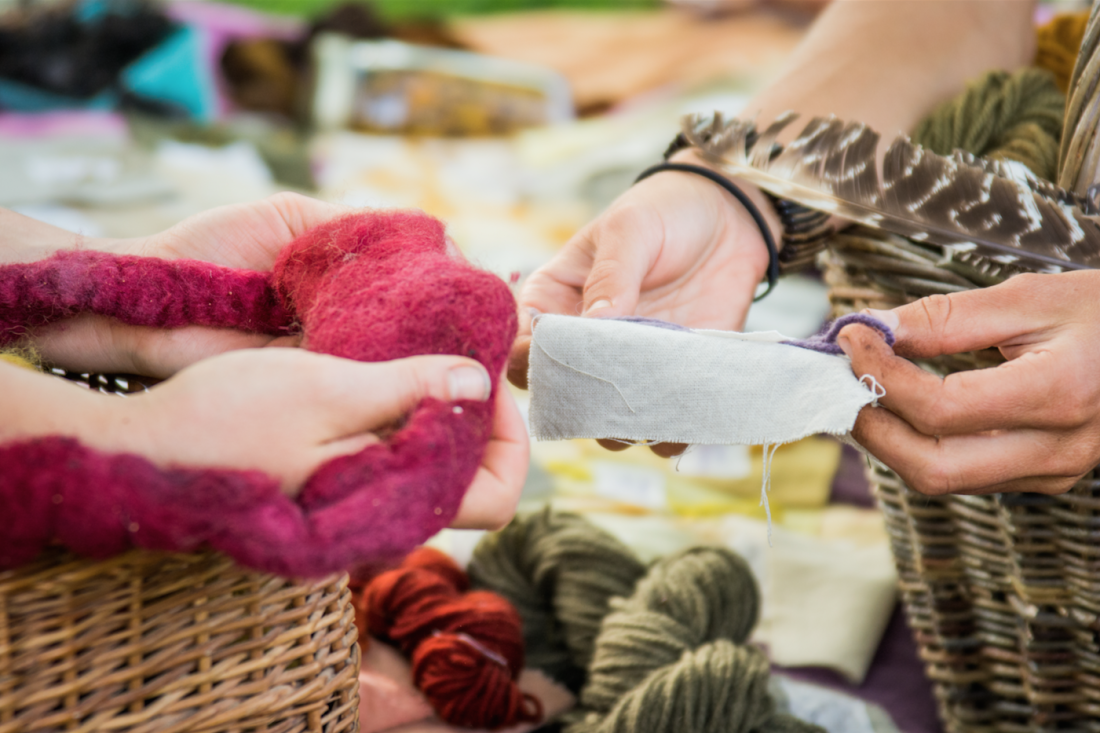
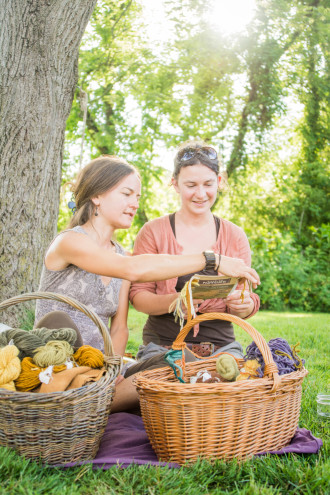
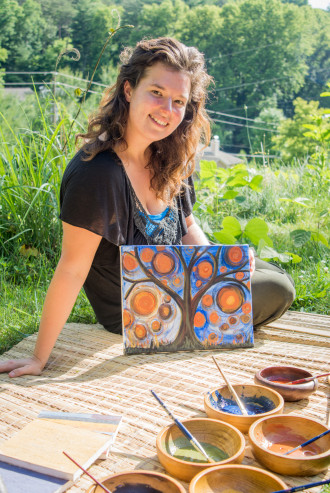
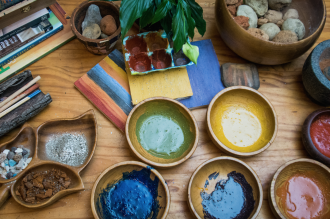
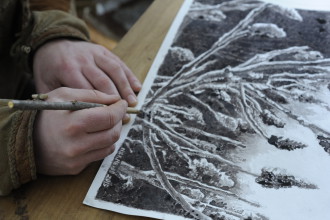
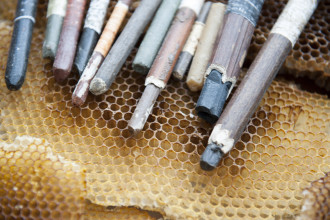
Before you comment
The comments section is here to provide a platform for civil dialogue on the issues we face together as a local community. Xpress is committed to offering this platform for all voices, but when the tone of the discussion gets nasty or strays off topic, we believe many people choose not to participate. Xpress editors are determined to moderate comments to ensure a constructive interchange is maintained. All comments judged not to be in keeping with the spirit of civil discourse will be removed and repeat violators will be banned. See here for our terms of service. Thank you for being part of this effort to promote respectful discussion.